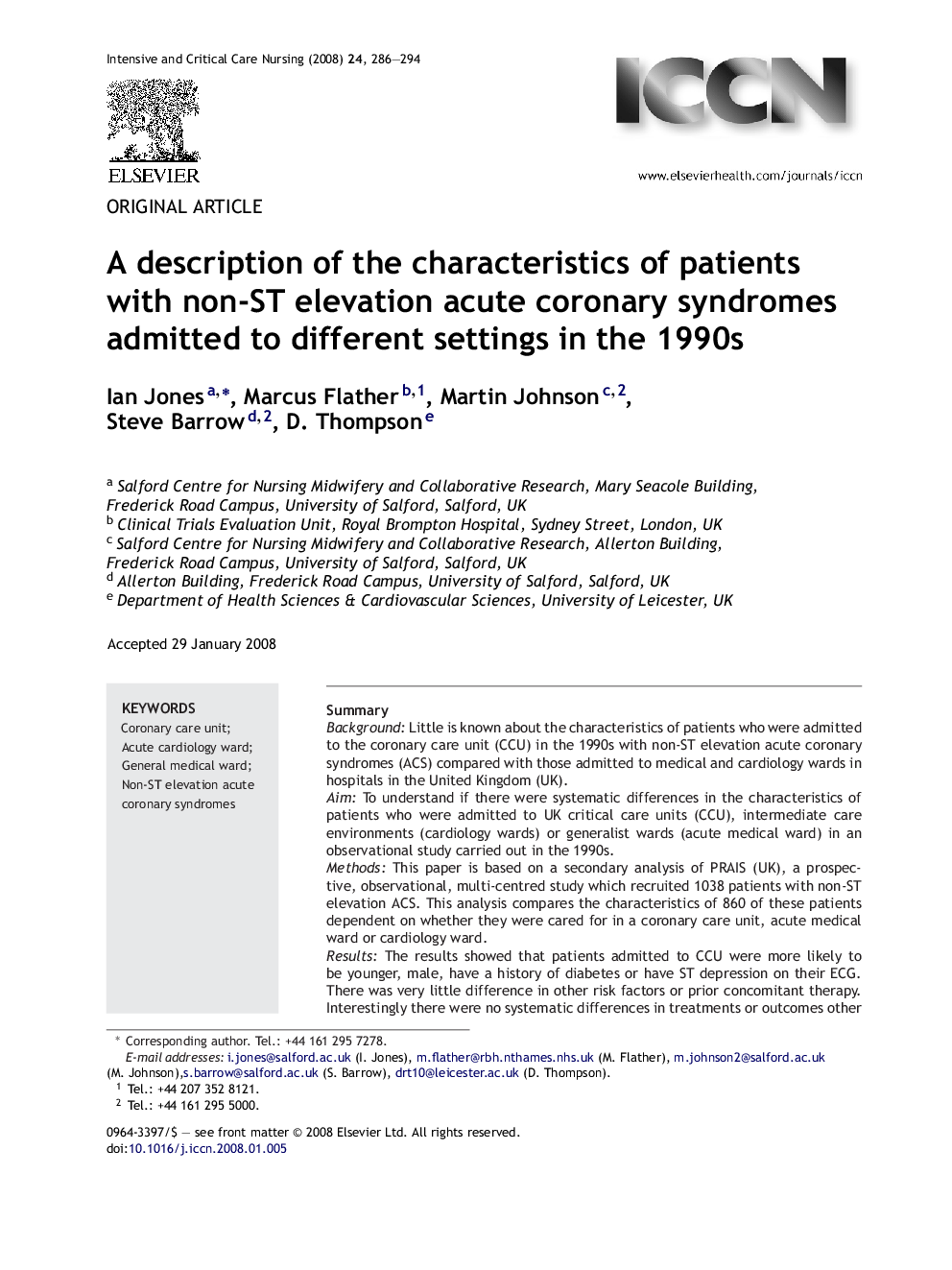| Article ID | Journal | Published Year | Pages | File Type |
|---|---|---|---|---|
| 2652483 | Intensive and Critical Care Nursing | 2008 | 9 Pages |
SummaryBackgroundLittle is known about the characteristics of patients who were admitted to the coronary care unit (CCU) in the 1990s with non-ST elevation acute coronary syndromes (ACS) compared with those admitted to medical and cardiology wards in hospitals in the United Kingdom (UK).AimTo understand if there were systematic differences in the characteristics of patients who were admitted to UK critical care units (CCU), intermediate care environments (cardiology wards) or generalist wards (acute medical ward) in an observational study carried out in the 1990s.MethodsThis paper is based on a secondary analysis of PRAIS (UK), a prospective, observational, multi-centred study which recruited 1038 patients with non-ST elevation ACS. This analysis compares the characteristics of 860 of these patients dependent on whether they were cared for in a coronary care unit, acute medical ward or cardiology ward.ResultsThe results showed that patients admitted to CCU were more likely to be younger, male, have a history of diabetes or have ST depression on their ECG. There was very little difference in other risk factors or prior concomitant therapy. Interestingly there were no systematic differences in treatments or outcomes other than would be expected by chance, although there were trends to higher rates of MI and heart failure in the CCU group.ConclusionOur analysis shows that the main drivers of admission to CCU in the 1990s were ST depression and MI—both indicators of high risk, but older age and female gender seemed to decrease the likelihood of admission to CCU. Criteria for admission to specific specialist and non-specialist care environments should be standardised and the use of risk scores could be an important way forward.
